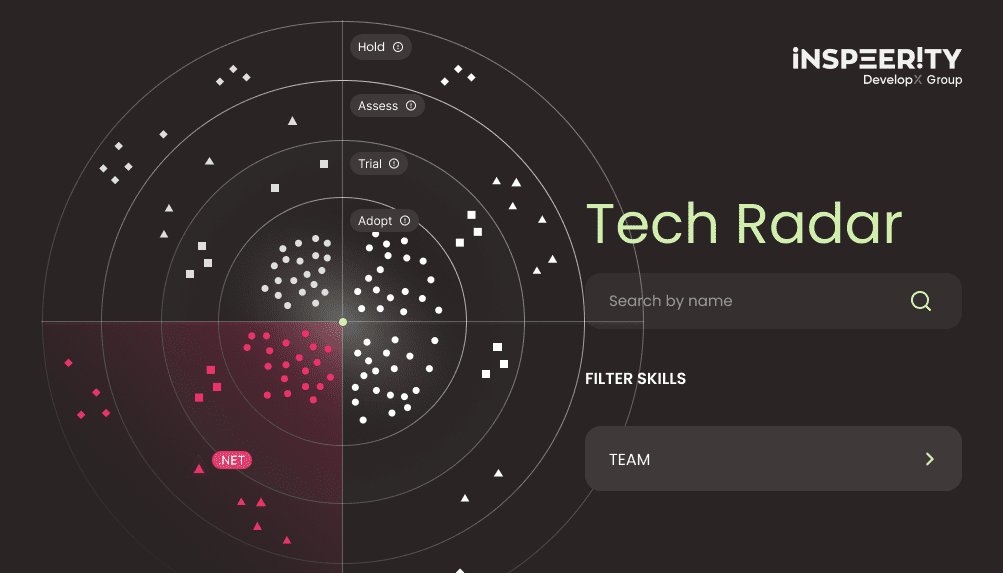When you’re thinking about your next project, the cost is most likely top of your mind. Choosing the right pricing model for your next software project can make a great impact on its success. Not to mention your overall experience with your new software partner.
There are two common pricing models that people choose for software development. And it’s often a choice between Time & Material vs. Fixed Price. The problem is both of them offer different benefits and challenges. In short, each model is better suited for different types of projects.
In today’s blog, I will explore how these models can benefit your project. As well as break down which might be better for you and why. Let’s jump into the conversation.
When does time & material work best?
A T&M contract has one big advantage, and that’s flexibility. You are billed based on the developer man hours and for any materials. This makes the T&M model great for projects where the scope is not fully defined from the start. It’s also great for when the scope is expected to evolve.
What are the key benefits of Time & Material?
T&M contracts offer you flexibility
T&M contracts work well when the project needs might change. You can adjust the project and add new features without reworking the contract. This keeps things in line with your business goals as they evolve. Imagine a situation where after more user research you find that your product could benefit from a certain feature. Having a flexible contract allows you to bring on extra specialists. Additionally, T&M contracts offer the freedom to plan and re-prioritize tasks as the project moves forward. This makes them ideal for agile projects where adaptability is crucial.
It gives you transparency in spending
T&M contracts provide full transparency by offering detailed reports on how time and resources are used. This gives you better control over costs. In short, every decision on resource allocation and project direction is based on up-to-date info. Additionally, the budget for T&M projects is flexible. This allows you to directly manage spending and adjust costs effectively as the project evolves. Think, bringing on extra developers to expand the scope.
You’re always involved
T&M projects encourage close collaboration between you & the development team. This means that the project remains aligned with your expectations. Regular feedback loops allow for iterative improvements and changes. This allows you to steer the project as needed and provide input. This model is ideal if you like to stay hands-on.
The team can evolve
T&M projects often involve long-term collaboration. The same team works with you throughout, meaning your team will develop an understanding of your project. And this knowledge will help push the project forward. It also means better alignment with the project and development process.
What are the challenges of T&M contracts?
With T&M projects, budget uncertainty is a potential concern, as final costs can rise with unexpected developments. This may be challenging if you’re working with strict budget limits. Effective time management and frequent monitoring are key to avoiding project overruns. Weekly sprint meetings, for example, are crucial for both you and the development team. It keeps track of progress and means the project stays on course. If you are unsure of the best way to manage a team, we have a guide on effective teamwork tips for IT projects.
When does a fixed-price model work?
Fixed-price software development offers a more structured approach. It gives you a set price which is agreed upon before the project begins. This fixed pricing model is ideal for projects where the scope and requirements are clearly defined. This provides you with predictability and financial security. However, before a project starts you need to invest more time in discovery phase services. It may also mean learning how to write a product requirements document to get all the details clear.
What are the Key Benefits of fixed-price?
It gives you budget certainty
With a Fixed Price model, you gain budget certainty by knowing the total cost upfront. This helps you by simplifying financial planning and eliminating surprises. Additionally, and depending on the contract, the risk of cost overruns is transferred to your partner. This protects you from unexpected expenses and makes project management more predictable.
You have a clear scope from the start
Fixed-price contracts need well-defined specifications and detailed documentation. This is true of all projects but more important here. It helps to establish clear expectations and deliverables. Having a clear set of goals from the start is crucial to avoid misunderstandings and ensure expectations. Once the project scope is defined, you can take a more hands-off approach. The bonus is that it allows you to focus on other priorities while the development team works towards delivering the agreed results.
What are the challenges of fixed-price contracts?
Fixed Price contracts can be inflexible, as any changes to the project scope after signing can be costly and time-consuming. This makes it harder to adapt to any changes your project needs. This can be problematic if the initial scope isn’t well-defined. There’s also a risk that vendors may cut corners to stay within budget, so it’s important to ensure that quality standards are clearly outlined. A reliable software partner will take the time to review their quality guidelines with you. Additionally, the need for thorough upfront planning can delay the project’s start. To get the best results you need to closely collaborate with your partner to define scope and requirements.
Which model works best for you?
When deciding between a T&M contract vs. fixed price, it’s important to consider the nature of your project. As well as your budget, and your preferred level of involvement.
Project scope and requirements
- If your project has well-defined requirements and you prioritize predictability in costs, a fixed-price contract in Project Management may be the best fit.
- If the project scope is likely to evolve or is not fully known, a T&M model provides the necessary flexibility to accommodate changes as they arise.
Budget considerations
- Fixed-price contracts offer budget certainty. This makes them ideal for projects with strict financial constraints.
- T&M contracts, while offering less predictability, allow for greater control and adaptability. This can be advantageous in changing environments.
Client involvement
- T&M projects benefit from ongoing client engagement and decision-making. This makes them great for collaborative environments where continuous input is needed.
- Fixed-price projects require less day-to-day involvement. If you’re looking to be more hands-off this is a benefit of the contract type.
Risk management
- Fixed Price contracts transfer financial risk to the vendor. And provide you with more security against cost overruns.
- T&M contracts distribute risk more evenly, with clients sharing responsibility for managing scope and budget. This offers more control over the project’s direction.
Evaluate your options with a scoring system
Whether you are looking for a dedicated team or staff augmentation, it’s best to evaluate which pricing model will work better for you. I recommend creating an Excel spreadsheet to help you decide on which might be better. Additionally, we have an example here that lets you rate how important different areas are to your project. By evaluating factors like cost, flexibility, and risk, you can get a clearer picture of which model might work best for your specific needs.
Conclusion
Both Time & Material and Fixed Price models have their benefits. The choice between them should be based on the needs of your project. By understanding the nature of your project, your budget constraints, and your level of involvement, you can select the pricing model that best suits your goals. A good software partner will take the time to help you define your project goals. This careful alignment means a more successful outcome, delivering the value and results your project needs.




